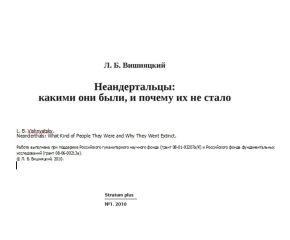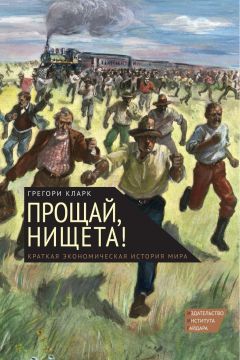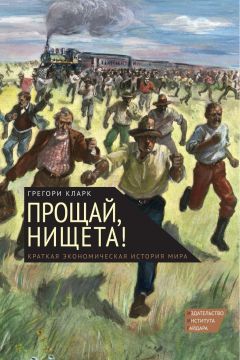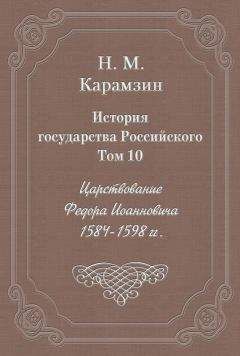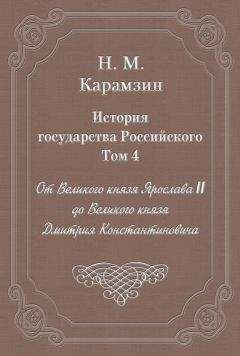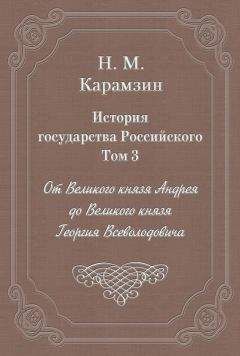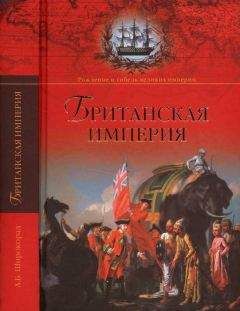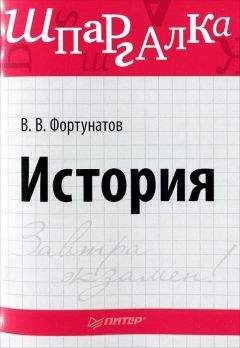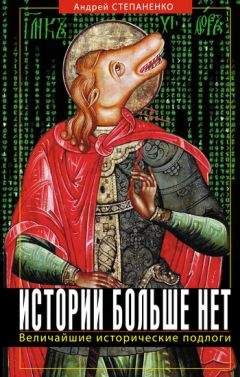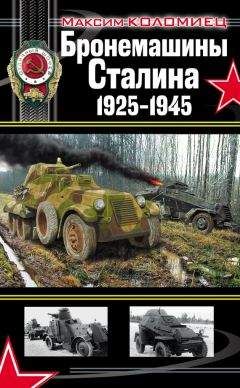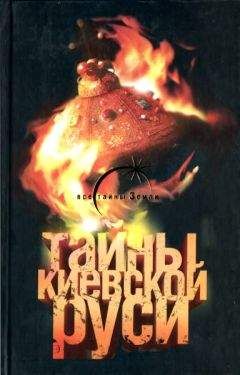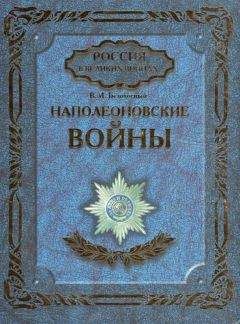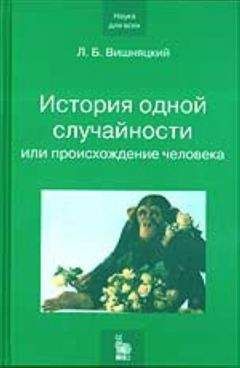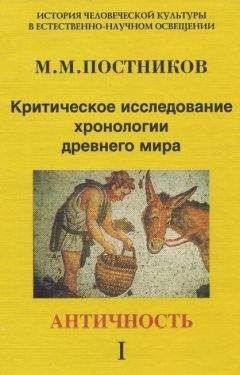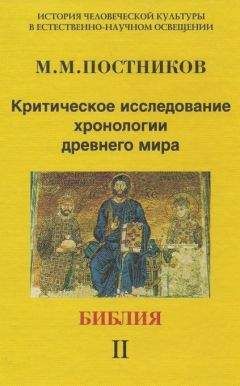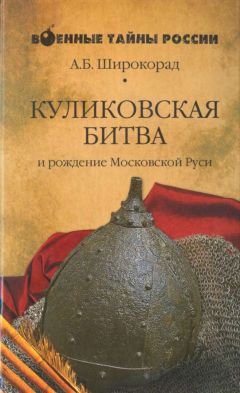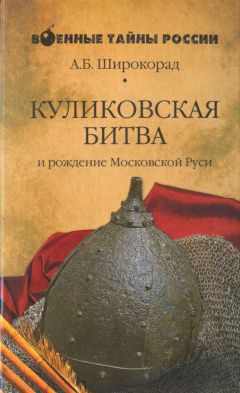Леонид Вишняцкий - Неандертальцы: история несостоявшегося человечества
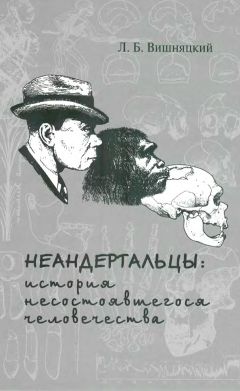
Скачивание начинается... Если скачивание не началось автоматически, пожалуйста нажмите на эту ссылку.
Жалоба
Напишите нам, и мы в срочном порядке примем меры.
Описание книги "Неандертальцы: история несостоявшегося человечества"
Описание и краткое содержание "Неандертальцы: история несостоявшегося человечества" читать бесплатно онлайн.
Неандертальцы не были нашими прямыми предками, но, тем не менее, они наши ближайшие родственники, и у нас с ними очень много общего. Называть их тупиковой ветвью эволюции, по мнению автора этой книги, столь же неверно, как неверно применять этот эпитет по отношению, скажем, к коренному населению Тасмании и другим первобытным популяциям людей, уничтоженным в результате европейской колонизации. Скорее, неандертальцев следует считать "дублерами" гомо сапиенс, запасным вариантом антропогенеза. Почему же история выбрала нас, а не их? Как происходил этот выбор? Что сыграло в нем решающую роль? Был ли он предопределен заранее или зависел больше от привходящих и потому во многом случайных обстоятельств? Автор рассматривает эти и многие другие вопросы, попутно суммируя и в доступной для неспециалистов форме излагая то, что известно сейчас о происхождении и эволюционной истории неандертальцев, их умственных и языковых способностях, материальной и зарождавшейся духовной культуре, о динамике их расселения и причинах вымирания. По каждой из перечисленных тем учтены наиболее интересные и важные сведения, имевшиеся в распоряжении палеоантропологии, археологии и смежных с ними наук на середину 2010 г. Книга адресована всем, кого занимает древнейшее прошлое человечества - от академиков до студентов и школьников старших классов.
Schrenk F., Muller S. The Neanderthals. New York: Routledge, 2009. (Transl. from 2005 Germ, ed.)
Schwalbe G. Uber die specifischen Merkmale des Neanderthalschadels // Verbandlungen der Anatomische Gesselschaft: Erganzbeft zur Anatomische Anzeiger 19, 1901. P. 44-61.
Schwalbe G. Studien zur Vorgeschichte des Menschen: I. Zur Frage der Abstammung des menschen. Stuttgart: E. Scheizerbart, 1906.
Schwartz J. H., Tattersall I., Laitman J. T. New thoughts on Neanderthal behavior: Evidence from nasal morphology // H. Ullrich (ed). Hominid Evolution: Lifestyles and Strategies. Gelsenkirchen; Schwelm: Edition Archaea, 1999. P. 166-186.
Schwartz J. H., Tattersall I., Teschler-Nicola M. Architecture of the nasal complex in Neanderthals: Comparison with other hominids and phylogenetic significance // AR. 2008. N 291. P. 1517-1534.
Semal P., Rougier H., Crevecoeur I., Jungels C., Flas D., Hauzeur A., Maureille В., Germonpre M.,Bocherens H., Pirson SCammaertL., ClerckN. De, Hambucken A., Higham Т., Toussaint M., Plicht J. van der. New data on the late Neandertals: Direct dating of the Belgian Spy fossils // AJPA. 2009. N 138. P. 421-428.
Semendeferi K., Damasio H., Frank R., Hoesen G. W. van. The evolution of the frontal lobes: a volumetric analyses based on three dimensional reconstructions of magnetic resonance scans of human and ape brains // JHE. 1997. N 32. P. 375- 388.
Serangeli У, Bolus М. Out of Europe — The dispersal of a successful European hominin form // Quartar. 2008. N 55. P. 83-98.
Serre D., Paabo S. The fate of European Neanderthals: results and perspectives from ancient DNA analyses // K. Harvati, T. Harrison (eds). Neanderthals Revisited: New Approaches and Perspectives. Dordrecht: Springer, 2006. P. 211-219.
Shang H., Tong H., Zhang S., Chen F., Trinkaus E. An early modern human from Tianyuan cave, Zhoukoudian, China // PNAS. 2007. N 104. P. 6573-6578.
Shea J. У, Sisk M. L. Complex projectile technology and Homo sapiens dispersal into Western Eurasia // PA. 2010. P. 100-122.
Shen G., Wang, Cheng H., Edwards R. L. Mass spectrometric U-series dating of Laibin hominid site in Guangxi, southern China// JAS. 2007. N 35. P. 2109- 2114.
ShreeveJ. The Neandertal Enigma: Solving the Mystery of Modern Human Origins. New York: William Morrow and Company, 1995.
Slimak L. Circulations de materiaux tres exotiques au Paleolithique moyen, une notion de detail // BSPF. 2008. N 105. P. 267-281.
Smith F. H. Upper Pleistocene hominid evolution in South-Central Europe: A review of the evidence and analysis of trends // CAn. 1982. N 23. P. 667- 703.
Smith F. H. Species, populations, and assimilation in later human evolution // C. S. Larsen (ed). A Companion to Biological Anthropology. Chichester: Wiley- Blackwell. P. 357-378.
Smith F. H.,Jankovic /., Karavanic I. The assimilation model, model human origins in Europe, and the extinction of Neandertals // QI. 2005. N 137. P. 7-19.
Smith Т. M, Harvati K., Olejniczak А. У, Reid D. J., Hublin J.-J., Panagopoulou E. Brief communication: dental development and enamel thickness in the Lakonis Neanderthal molar // AJPA. 2009. N 138. P. 112-118.
Snodgrass J. J., Leonard W. R. Neandertal energetics revisited: insights into population dynamics and life history evolution // PA. 2009. P. 220-237.
Soares P., Achilli A., Semino O., Davies W., Macaulay K, Bandelt H.-J., TorroniA., Richards M. B. The Archaeogenetics of Europe // CB. 2010. N 20. R174- R183.
Sommer M. Mirror, mirror on the wall: Neanderthal as image and 'distortion' in early 20th-century French science and press // SSS. 2006. N 36. P. 207-240.
Sorensen M. VLeonard W. R. Neandertal energetics and foraging efficiency// JHE. 2001. N 40. P. 483-495.
Sorensen B. n. d. Demography and the extinction of the European Neanderthals // http://energy. rue. dk/Neanderthal%20Demography. pdf
Soressi M, D Errico F. Pigments, gravures, parures: Les conportements symboliques controverses des Neandertaliens // B. Vandermeersch, B. Maureille (dir). Les Neandertaliens. Biologie et cultures. Paris: Editions du CTHS, 2007. P. 297-309.
Soressi M, Jones H. L.,Rink W. У, Maureille В., TillierA.-M. The Pech-de-l'Aze' I Neandertal child: ESR, uranium-series, and AMS 14C dating of its MTA type В context // JHE. 2007. N 52. P. 455-466.
Spencer F. The Neandertals and their evolutionary significance: A brief historical survey // F. H. Smith, F. Spencer, (eds). The Origins of Modern Humans. A World Survey of the Fossil Evidence. New York: Alan R. Liss, Inc., 1984. P. 1-49.
Spencer F., Smith F. H. The significance of Ales Hrdlicka's "Neandertal phase of man": a historical and current assessment // AJPA. 1981. N 56. P. 435-59.
Speth J. D., Tchernov E. Neandertal hunting and meat-processing in the Near East: evidence from Kebara Cave (Israel) // С. B. Stanford, H. T. Bunn (eds). Meat-Eating and Human Evolution. Oxford: Oxford University Press, 2001. P. 52-72.
Spoor F., Hublin J.-J., Braun M, Zonneveld F. The bony labyrinth of Neanderthals // JHE. 2003. N 44. P. 141-165.
Steegmann А. Т., Cerny F. J., Holliday T. W. Neandertal cold adaptation: physiological and energetic factors // AJHB. 2002. N 14. P. 566-583.
Stefan V. H., Trinkaus E. Discrete trait and dental morphometric affinities of the Tabun 2 mandible // JHE. 1998a. N 34. P. 443-468.
Stefan V. HTrinkaus E. La Quina 9 and Neandertal mandibular variability// BMSAP. 1998b. N 10. P. 293-324.
Steudel-Numbers R. L., Tilkens M. J. The effect of lower limb length on the energetic cost of locomotion: implications for fossil hominins // JHE 47. 2004. P. 95-109.
Stewart J. R. The ecology and adaptation of Neanderthals during the non-analogue environment of Oxygen Isotope Stage 3 // QI. 2005. N 137. P. 35-46.
Stiner M. C. The faunal remains from Grotta Guattari: A taphonomic perspective // CAn. 1991. N32. P. 103-117.
Stiner M. C. Small animal exploitation and its relation to hunting, scavenging, and gathering in the Italian Mousterian // G. L. Peterkin, H. Bricker, P. Mellars (eds). Hunting and Animal Exploitation in the Later Palaeolithic and Mesolithic of Eurasia. Washington DC: American Anthropological Association, 1993. P. 107-125.
Stiner M. C. Honor Among Thieves: A Zooarchaeological Study of Neandertal Ecology. Princeton: Princeton University Press, 1994.
Stolyhwo K. Homo primigenius appartient-il a une espece distincte de Homo sapiens? // L'Anthropologic. 1908a. N 19. P. 191-216.
Stolyhwo К. Le crane de Nowosiolka considere com preuve de Г existence a l'epoque historique de formes apparentees a H. primigenius II Bulletin International de l'Academie des Sciences de Cracovie. 1908b. P. 103-26.
Stoner B. P., Trinkaus E. Getting a grip on the Neandertals: Were they all thumbs? // AJPA. 1981. N54. P. 281-82.
Stermer F. C., Mysterud I. Cave smoke: air pollution poisoning involved in Neanderthal extinction? // MH. 2006. N 66. P. 723-724.
Straus W. L., Cave A. J. E. Pathology and posture of Neanderthal Man // QRB. 1957. N32. P. 348-63.
Stringer C. Modern human origins: progress and prospects // PTRSL (B). 2002. N 357. P. 563-579.
Stringer C. The Neanderthal — H. sapiens interface in Eurasia // K. Harvati, T. Harrison (eds). Neanderthals Revisited: New Approaches and Perspectives. Dordrecht: Springer, 2006. P. 315-323.
Stringer С., Gamble С. In Search of the Neanderthals. New York: Thames and Hudson, 1993.
Stringer С. В., Hublin J.-J. New age estimates for the Swanscombe hominid, and their significance for human evolution // JHE. 1999. N 37. P. 873-877.
Stringer С. В., Finlayson J. C., Barton R. N. E., Fernandez-Jalvo 7., Caceres /., Sabin R. С., Rhodes E. J., Currant A. PRodriguez-Vidal F., Giles-Pacheco F'., Riquelme-Cantal J. A. Neanderthal exploitation of marine mammals in Gibraltar // PNAS. 2008. N 105. P. 14319-14324.
Swisher С. С. Ill et al. Latest Homo erectus of Java: Potential contemporaneity with Homo sapiens in South-east Asia // Science. 1996. N 274. P. 1870-1874.
Tattersall I. The Last Neanderthal. The Rise, Success, and Mysterious Extinction of Our Closest Relatives. New York: Macmillan, 1995.
Tattersall I. What happened in the origins of human consciousness // AR. 2004. N276B.P. 19-26.
Tattersall I. Neanderthal skeletal structure and the place of Homo neanderthalensis in European hominid phylogeny // HE. 2006. N 21. P. 269-274.
Tattersall I. Neanderthals, Homo sapiens, and the question of species in paleoanthropology // JAnS. 2007. N 85. P. 139-146.
Tattersall L Human origins: Out of Africa// PNAS. 2009. N 106. P. 16018- 16021.
Tattersall /., Schwartz J. H. Hominids and hybrids: The place of Neanderthals in human evolution//PNAS. 1999. N 96. P. 7117-7119.
Tattersall /., Schwartz J. H. Extinct Humans. Boulder, CO: A Peter N. Nevraumont Book/Westview Press, 2000.
Tattersall /., Schwartz J. H. The distinctiveness and systematic context of Homo neanderthalensis II K. Harvati, T. Harrison (eds). Neanderthals Revisited: New Approaches and Perspectives. Dordrecht: Springer, 2006. P. 9-22.
Tattersall /., Schwartz J. H. The Morphological distinctiveness of Homo sapiens and its recognition in the fossil record: Clarifying the problem// EA. 2008. N 17. P. 49-54.
Thieme H. Lower Palaeolithic hunting spears from Germany// Nature. 1997. N 385. P. 807-810.
Thieme H. Lower Palaeolithic throwing spears and other wooden implements from Schoningen, Germany // H. Ullrich (ed). Hominid Evolution: Lifestyles and Strategies. Gelsenkirchen; Schwelm: Edition Archaea, 1999. P. 383-395.
Thieme H. The Lower Palaeolithic art of hunting. The case of Schoningen 13 II-4, Lower Saxony, Germany // C. Gamble, M. Porr (eds). The Hominid Individual in Context. Archaeological investigations of Lower and Middle Palaeolithic Landscapes, Locales and Artifacts. New York: Routledge, 2005. P. 115-132.
Tillet T. Les grottes a ours et occupations Neandertaliennes dans les Alps // L'ours et L'homme. Liege: ERAUL, 2002. P. 167-84.
Trinkaus E. Hard times among the Neanderthals // NHR. 1978. P. 58-63
Trinkaus E. Sexual differences in Neanderthal limb bones // JHE. 1980. N 9. P. 377-397.
Trinkaus Е. Neanderthal limb proportions and cold adaptation // С. B. Stringer (ed). Aspects of Human Evolution. London: Taylor and Francis, 1981. P. 187- 124.
Trinkaus E. Artificial cranial deformation in the Shanidar 1 and 5 Neandertals // CAn. 1982. N23. P. 198-199.
Trinkaus E. The Neandertal face: Evolutionary and functional perspectives on a recent hominid face // JHE. 1987. N 16. P. 429-443.
Trinkaus E. The evolutionary origins of the Neandertals or, why were there Neandertals // E. Trinkaus (ed). L'Homme de Neandertal. Vol. 3. L'Anatomie. Liege: ERAUL, 1988. P. 11-29.
Trinkaus E. Neanderthal mortality patterns // JAS. 1995. N 22. P. 121-142.
Trinkaus E. Appendicular robusticity and the paleobiology of modern human emergence // PNAS. 1997. N 94. P. 13367-13373.
Trinkaus E. Neandertal faces were not long; modern human faces are short // PNAS. 2003. N 100. P. 8142-8145.
Trinkaus E. Early modern humans // ARA. 2005. N 34. P. 207-230.
Trinkaus E., Shipman P. The Neandertals. Of Skeletons, Scientists, and Scandal. New York: Vintage Books, 1994.
Trinkaus E., Zilhao J. Phylogenetic implications // J. Zilhao and E. Trinkaus (eds). Portrait of the Artist as a Child. The Gravettian Human Skeleton From the Abrigo do Lagar Velho and Its Archeological Context. (Trabalhos de Arqueologia 22). Lisboa: Instituto Portugues de Arqueologia, 2002. P. 497-518.
Tzedakis P. C., Hughen K. A., Cacho /., Harvati K. Placing late Neanderthals in a climatic context // Nature. 2007. N 449. P. 206-208.
Ullrich H. Manipulations on human corpses, mortuary practice and burial rites in Palaeolithic times // V. Novotny, Mizerova (eds). Fossil Man. New Facts, New Ideas. Brno: Anthropos Institute, 1986. P. 227-236.
Underdown S. A potential role for transmissible spongiform encephalopathies in Neanderthal extinction // MH. 2008. N 71. P. 4-7.
Подписывайтесь на наши страницы в социальных сетях.
Будьте в курсе последних книжных новинок, комментируйте, обсуждайте. Мы ждём Вас!
Похожие книги на "Неандертальцы: история несостоявшегося человечества"
Книги похожие на "Неандертальцы: история несостоявшегося человечества" читать онлайн или скачать бесплатно полные версии.
Мы рекомендуем Вам зарегистрироваться либо войти на сайт под своим именем.
Отзывы о "Леонид Вишняцкий - Неандертальцы: история несостоявшегося человечества"
Отзывы читателей о книге "Неандертальцы: история несостоявшегося человечества", комментарии и мнения людей о произведении.





